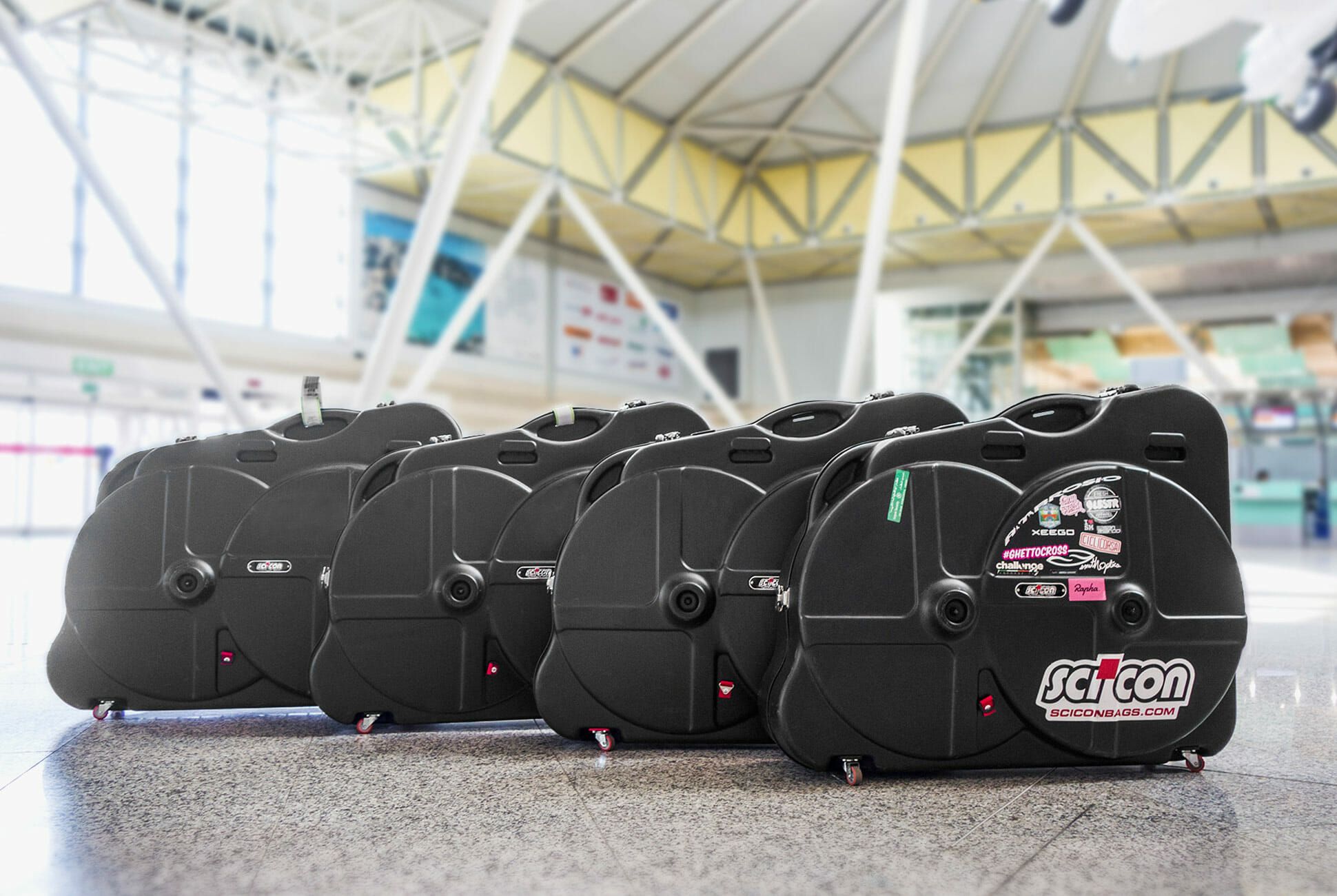Preparing Your Bike for Flight: Tips and Tricks
When flying with a bicycle, proper preparation is crucial to ensure a safe and stress-free journey. Before checking in your bike, it’s essential to clean and disassemble it to prevent any damage during transit. Start by removing any accessories, such as pedals, wheels, and handlebars, and store them in a separate bag or box. This will not only protect your bike but also make it easier to pack and transport.
Next, clean your bike thoroughly to remove any dirt, grime, or lubricants that may attract unwanted attention from airport staff or customs officials. Use a soft-bristled brush and mild soap to wipe down the frame, wheels, and other components. Make sure to dry your bike completely before packing it to prevent any water spots or damage.
When disassembling your bike, be sure to pack all the necessary tools and spare parts, such as Allen wrenches, tire levers, and brake pads. It’s also a good idea to pack a small pump or CO2 cartridges to ensure you can inflate your tires at your destination. Consider using a bike box or bag specifically designed for air travel, as these will provide extra protection and make it easier to transport your bike.
Finally, make sure to check with your airline for any specific requirements or restrictions on flying with a bicycle. Some airlines may have specific rules or regulations regarding bike transport, so it’s essential to be aware of these before checking in. By following these tips and tricks, you can ensure your bike arrives at your destination safely and securely, ready for your next cycling adventure.
Flying with a bicycle requires careful planning and preparation, but with the right knowledge and equipment, it can be a hassle-free experience. By taking the time to properly prepare your bike, you can enjoy a stress-free journey and focus on the excitement of exploring new destinations on two wheels.
Choosing the Right Airline: Bike-Friendly Carriers and Policies
When flying with a bicycle, selecting the right airline can make all the difference in ensuring a smooth and hassle-free journey. Not all airlines are created equal when it comes to bike transport, so it’s essential to research and compare policies before booking your flight.
Some airlines, such as United Airlines, American Airlines, and Delta Air Lines, have specific bike transport policies and procedures in place. These airlines may offer specialized bike boxes or bags, and some may even allow bikes to be checked as regular luggage. However, fees and restrictions may apply, so it’s crucial to check with the airline before booking.
Other airlines, such as Southwest Airlines and JetBlue, have more restrictive bike transport policies. These airlines may require bikes to be packed in a hard-sided case, and fees may be higher than those of bike-friendly airlines.
To find the best airline for flying with a bicycle, start by researching the airline’s website and looking for information on bike transport policies. You can also contact the airline’s customer service department to ask about their bike transport procedures and fees.
When comparing airlines, consider the following factors:
- Bike transport fees: What are the fees for checking a bike, and are there any discounts for frequent flyers or loyalty program members?
- Bike packaging requirements: Does the airline require bikes to be packed in a specific type of case or bag?
- Weight and size restrictions: Are there any restrictions on the weight or size of bikes that can be transported?
- Handling procedures: How will the airline handle your bike during transit, and what measures are in place to prevent damage?
By doing your research and choosing a bike-friendly airline, you can ensure a stress-free journey and enjoy the excitement of exploring new destinations on two wheels.
Flying with a bicycle requires careful planning, but with the right airline and knowledge, it can be a seamless experience. Remember to always check with your airline for specific bike transport policies and procedures to ensure a smooth journey.
Packing Your Bike: Strategies for Safe and Efficient Transport
Packing your bike for air travel requires careful consideration to ensure it arrives at your destination safely and efficiently. A well-packed bike can make all the difference in preventing damage and minimizing the risk of loss or theft.
Step 1: Choose the Right Bike Box or Bag
Invest in a high-quality bike box or bag specifically designed for air travel. These containers are designed to protect your bike from impact and damage during transit. Look for a box or bag that is sturdy, durable, and has a secure closure system.
Step 2: Disassemble Your Bike
Disassemble your bike to make it easier to pack and transport. Remove the wheels, pedals, and any other accessories that could be damaged during transit. Use a torque wrench to loosen any bolts or screws, and store them in a separate bag or container.
Step 3: Pack Your Bike
Place your bike in the box or bag, making sure it is centered and secure. Use padding materials such as foam inserts, bubble wrap, or packing peanuts to protect your bike from impact. Make sure to fill any empty spaces in the box or bag with packing materials to prevent movement during transit.
Step 4: Secure Your Bike
Use straps or ropes to secure your bike to the box or bag. Make sure the straps are tight and won’t come loose during transit. You can also use additional padding materials such as cardboard or foam inserts to provide extra protection.
Step 5: Label and Document Your Bike
Label your bike box or bag with your name, address, and contact information. Make sure to include a detailed inventory of your bike’s components and accessories. Take photos of your bike before packing it, and keep a record of your bike’s serial number and any other identifying features.
By following these steps and using the right materials, you can ensure your bike is packed safely and efficiently for air travel. Remember to always check with your airline for specific bike transport policies and procedures to ensure a smooth journey.
Flying with a bicycle requires careful planning and attention to detail, but with the right knowledge and equipment, it can be a hassle-free experience. By packing your bike correctly, you can enjoy the excitement of exploring new destinations on two wheels.
Checking Your Bike: Airport Procedures and Regulations
When flying with a bicycle, checking your bike at the airport can be a daunting task. However, by understanding the procedures and regulations, you can ensure a smooth and hassle-free experience.
Declaring Your Bike
When checking in for your flight, inform the airline staff that you have a bike to check. They will provide you with a declaration form to fill out, which will include details such as the bike’s make, model, and serial number.
Paying Applicable Fees
Most airlines charge a fee for checking a bike, which can range from $50 to $200 or more, depending on the airline and the size of the bike. Be sure to check with your airline for their specific bike transport fees and policies.
Labeling and Handling
Once you have checked in your bike, make sure it is properly labeled and handled. The airline staff will attach a baggage tag to your bike, which will include your name, flight number, and destination. Ensure that the tag is securely attached to the bike and that the bike is handled with care.
Special Handling
Some airlines offer special handling for bikes, which may include a dedicated bike check-in area or a specialized bike handling team. Be sure to ask about these services when checking in your bike.
Airport Procedures
When checking your bike at the airport, be prepared for the following procedures:
- Check-in: Inform the airline staff that you have a bike to check and fill out the declaration form.
- Baggage drop-off: Take your bike to the designated baggage drop-off area.
- Security screening: Your bike will undergo security screening, which may include X-ray or manual inspection.
- Baggage handling: Your bike will be handled by the airline’s baggage handling team and loaded onto the plane.
By understanding the airport procedures and regulations, you can ensure a smooth and hassle-free experience when flying with a bicycle.
Flying with a bicycle requires careful planning and attention to detail, but with the right knowledge and preparation, it can be a stress-free experience. By following these tips and guidelines, you can enjoy the excitement of exploring new destinations on two wheels.
Carrying On: Can You Bring Your Bike on Board?
While most airlines require bicycles to be checked as luggage, some may allow certain types of bikes to be carried on board. However, this is subject to specific airline policies and regulations.
Types of Bikes Allowed
Some airlines may permit folding bikes, which are designed to be compact and lightweight, to be carried on board. These bikes are typically smaller than 62 linear inches (157 cm) and weigh less than 50 pounds (23 kg).
Other types of bikes that may be allowed on board include:
- Brompton bikes: These are folding bikes that are specifically designed to be compact and lightweight.
- Tandem bikes: Some airlines may allow tandem bikes to be carried on board, but this is subject to specific airline policies.
- Recumbent bikes: These are bikes that have a reclined seating position and may be allowed on board by some airlines.
Procedures for Carrying On
If you plan to carry your bike on board, be prepared to follow specific procedures:
- Check with the airline: Confirm with the airline that they allow bikes to be carried on board and what types of bikes are permitted.
- Measure your bike: Ensure that your bike meets the airline’s size and weight requirements.
- Pack your bike: Use a bike bag or cover to protect your bike during transit.
- Gate-check your bike: If your bike is too large to fit in the overhead bin, you may need to gate-check it.
While carrying your bike on board may be convenient, it’s essential to consider the potential risks and limitations. Always check with the airline and follow their specific policies and procedures to ensure a smooth and hassle-free journey.
Flying with a bicycle requires careful planning and attention to detail, but with the right knowledge and preparation, it can be a stress-free experience. By understanding the possibilities and limitations of carrying your bike on board, you can make informed decisions and enjoy the excitement of exploring new destinations on two wheels.
Assembling and Reassembling: Tips for a Smooth Journey
After arriving at your destination, you’ll need to assemble and reassemble your bike to get back on the road. Here are some tips to help you do it quickly and easily:
Packing Tools and Spare Parts
When packing your bike, make sure to include all the necessary tools and spare parts to assemble and reassemble it. This may include:
- Allen wrenches and screwdrivers
- Tire levers and spare tubes
- Brake pads and cables
- Chain lube and cleaning supplies
Assembling Your Bike
When assembling your bike, follow these steps:
- Attach the wheels and pedals
- Install the handlebars and stem
- Connect the brakes and gears
- Tighten all bolts and screws
Reassembling Your Bike
When reassembling your bike, follow these steps:
- Remove the wheels and pedals
- Disconnect the brakes and gears
- Remove the handlebars and stem
- Loosen all bolts and screws
Tips for a Smooth Journey
Here are some additional tips to help you assemble and reassemble your bike quickly and easily:
- Practice makes perfect: Before flying with your bike, practice assembling and reassembling it to get a feel for the process.
- Use a bike stand: A bike stand can make it easier to assemble and reassemble your bike, especially if you’re working in a small space.
- Keep it simple: Avoid over-complicating the assembly and reassembly process by keeping it simple and straightforward.
By following these tips, you can ensure a smooth and hassle-free journey when flying with your bike. Remember to always check with your airline for specific bike transport policies and procedures to ensure a stress-free experience.
Flying with a bicycle requires careful planning and attention to detail, but with the right knowledge and preparation, it can be a stress-free experience. By understanding how to assemble and reassemble your bike quickly and easily, you can enjoy the excitement of exploring new destinations on two wheels.
International Travel: Considerations for Flying with a Bike Abroad
When flying with a bicycle internationally, there are several additional considerations to keep in mind. From customs regulations to duty fees, cultural differences, and language barriers, international travel with a bike can be complex.
Customs Regulations
Each country has its own customs regulations regarding the importation of bicycles. Research the regulations of your destination country to ensure you comply with all requirements. Some countries may require a carnet de passage en douane (CPD), a document that proves ownership and allows temporary importation of a bicycle.
Duty Fees
Depending on the country, you may be required to pay duty fees on your bicycle. These fees can vary greatly, so it’s essential to research the fees associated with your destination country.
Cultural Differences
When traveling internationally with a bike, cultural differences can be a significant consideration. For example, some countries may have different bike laws or regulations, and language barriers can make communication challenging.
Language Barriers
Language barriers can be a significant challenge when traveling internationally with a bike. Research key phrases and words in the local language to help you communicate with airport staff, customs officials, and other locals.
Additional Tips
Here are some additional tips for flying with a bike internationally:
- Research, research, research: Understand the customs regulations, duty fees, and cultural differences of your destination country.
- Plan ahead: Book your flights and accommodations well in advance to ensure availability.
- Pack wisely: Pack your bike and gear carefully to avoid damage during transit.
- Stay flexible: Be prepared for unexpected challenges and changes in your travel plans.
By understanding the additional considerations for flying with a bike internationally, you can ensure a smooth and enjoyable journey. Remember to always research and plan ahead to avoid any unexpected challenges.
Flying with a bicycle internationally requires careful planning and attention to detail, but with the right knowledge and preparation, it can be a rewarding experience. By understanding the customs regulations, duty fees, and cultural differences of your destination country, you can enjoy the excitement of exploring new destinations on two wheels.
Real-Life Examples: Success Stories and Lessons Learned
Flying with a bicycle can be a daunting experience, but with the right knowledge and preparation, it can be a success. Here are some real-life examples of cyclists who have successfully flown with their bikes, including their experiences, tips, and lessons learned.
Example 1: Cycling in Europe
John, a seasoned cyclist, flew from the United States to Europe with his road bike. He packed his bike in a hard-shell case and checked it as luggage. Upon arrival, he assembled his bike and rode to his destination, enjoying the scenic routes and local culture.
Example 2: Mountain Biking in South America
Sarah, an avid mountain biker, flew from Canada to South America with her mountain bike. She packed her bike in a soft-shell bag and carried it on board. Upon arrival, she assembled her bike and rode to her destination, enjoying the challenging trails and breathtaking scenery.
Example 3: Touring in Asia
Mark, a touring cyclist, flew from Australia to Asia with his touring bike. He packed his bike in a hard-shell case and checked it as luggage. Upon arrival, he assembled his bike and rode to his destination, enjoying the local cuisine and cultural experiences.
Lessons Learned
These cyclists learned valuable lessons from their experiences flying with their bikes. Here are some tips and takeaways:
- Research, research, research: Understand the airline’s bike policies and procedures before booking your flight.
- Pack wisely: Use a sturdy bike case or bag and pack your bike carefully to avoid damage during transit.
- Plan ahead: Book your flights and accommodations well in advance to ensure availability.
- Stay flexible: Be prepared for unexpected challenges and changes in your travel plans.
By learning from these real-life examples, you can gain valuable insights and tips for flying with your bike. Remember to always research and plan ahead to ensure a smooth and enjoyable journey.
Flying with a bicycle requires careful planning and attention to detail, but with the right knowledge and preparation, it can be a rewarding experience. By understanding the challenges and opportunities of flying with a bike, you can enjoy the excitement of exploring new destinations on two wheels.








